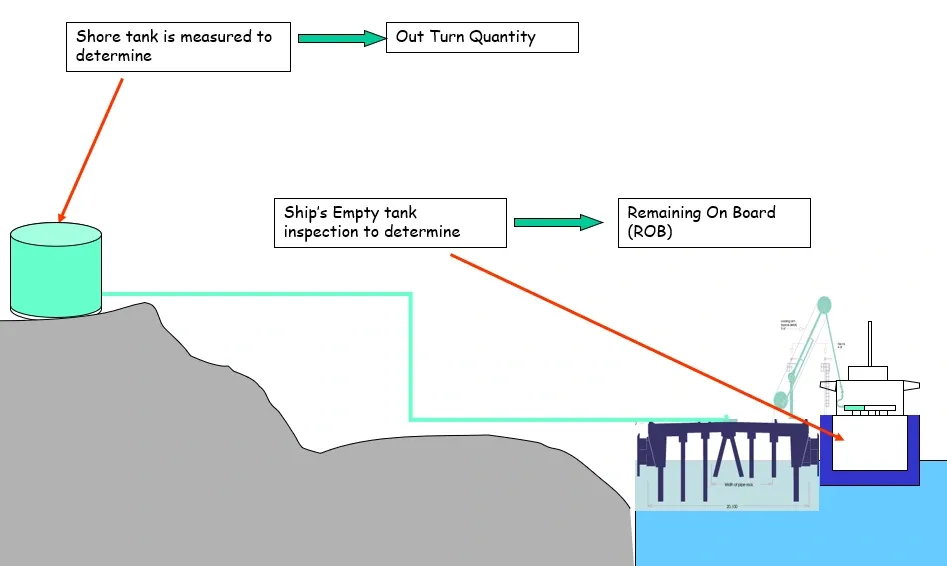Why do we need to evaluate a discharge performance ?
When a vessel is fixed for trade, the Owner & Master have a commercial responsibility is to :
- load, carry and discharge the cargoes
- without incident, üin the most cost-efficient manner
- without compromising safety or the environment.
This means vessel has to perform to meet the commercial requirement of trade !
Through this blog, we will be looking at a Vessel’s Discharging Performance.
Factors considered for evaluation
Charter Party requirements such as
- Pumping clause
- Cargo Retention Clause
- Freight Retention Clause
Terminal requirements, mainly with regard to
- Max allowable back pressure /discharge rate
- Stoppages due to lack of shore tank space or due to changing of shore tanks/grades.
- Crude Oil Washing requirement.
Owner’s requirements
- Crude Oil Washing requirement particularly at a discharge port preceding dry-dock
Pumping Clauses
The pumping clauses vary as per different Charter Party.
For example we will have look at
BPVOY4 :Clause-19.Loading and discharge of cargo

EXXONMOBIL VOY2000:
- The pumping warranty is implied by Part II clause 18f to discharge entire cargo (be it one or more grades) within 24hrs or maintain 100psi during entire period of discharge, provided shore facilities permit.
- All time lost as a result of vessel being unable to discharge entire cargo as per pumping warranty shall not counts as laytime / demurrage if on demurrage.
- Additional time allowed for Crude oil washing is implied by agreement and mentioned in Part I
SHELLVOY 5:
- The pumping warranty is implied by agreement and mentioned in C/P Part I (vii)
- Provides for very common possibility of crude oil washing being required by an outside authority (unlike other CP)
- Provides relaxation of pumping warranty by 0.75hrs for every tank crude oil washed.
Important issues to consider !!!
Irrespective of the terms of a Charter Party, whenever a vessel is unable to discharge as per the pumping warranty due to :
Any restrictions imposed by shore terminal or any restrictions though not expressed but becomes apparent, the Master must issue “ Letter of Protest” detailing such restrictions.
Lets see sequence on events at discharge port
a) Vessel arriving at discharge port

b) Calculation of Cargo quantities prior discharging

c) Ship shore agreement between Chief officer and Loading Master.

Vessel has to discharge the cargo as per terminal requirement
d) Ship / Shore pumping connection

e) Vessel commences discharging

Factors effecting Cargo Discharge
Vessel Related
- Proper planning and optimizing the bulk discharge time for COW and stripping
- Skill in handling in handling the equipment and monitoring Trim & List of vessel
- cargo pumping equipment : Maintained in good working condition
Terminal Related
- Number of Hoses / arms /connections provided
- Restrictions imposed in form of maximum back pressure / discharge rate
- Status of shore tanks – whether full or empty
- Line displacement required by the terminal at reduced rate
Cargo Related
- Type of cargo – Heating Cargo, High Vapor pressure cargo, High viscosity cargo
- Single grade or multi grade discharge
Other factors
- Single port or multiport discharge. üStoppages during discharge
- Line displacement required by the terminal at reduced rate
- COW – Min MARPOL COW (25% number of tanks) or COW as required by the Charterers
f) Discharging

Back pressure at ship’s manifold
What is Back Pressure ?
The pressure resulting from restriction of full natural flow of oil
Restrictions of flow can be due to various reasons such as distance /height of shore tanks from ship, shore tank condition full / empty , heavy cargo.

g) Discharging documents

Pumping Log
A very important document which describes the vessel performance and indicates restrictions experienced at the terminal


h) On Completion of discharge

Tank inspection is done to determine “ROB” (Remaining on Board)

How does Liquid ROB and Out Turn Quantity effect Owner’s interest ?
For this we need to look at following Clauses …..
Cargo Retention Clause
If any ROB is determined as “Liquid” by the independent surveyor, then…….
Charterers shall be entitled to deduct from freight the Value of cargo on basis free on board + freight for that quantity
Freight Retention Clause
If there is a difference of more than 0.5% between the Bill of lading figures and the Out Turn Quantity Charterers have the right to deduct from freight the Cost + Insurance + Freight (CIF) value of the short-delivered cargo”.
How to protect Owner’s interest from cargo claims
a) Complying with Charter Party Terms and……………
b) Proper Cargo Documentation
- Notice of Readiness
- Letter to Terminal Representative at discharge port
- Time Sheet üUllage Report prior discharging
- Pumping Log üCrude Oil Washing Log
- ROB Report & Dry Tank Certificate
- Letter of Protest as applicable.
The records in the document to be made in a correct manner so as to adequately reflect the discharge performance of vessel and also any restrictions imposed by terminal
Letter Of Protest
For Restrictions imposed by /experienced at the terminal


Vessel’s Time sheet

